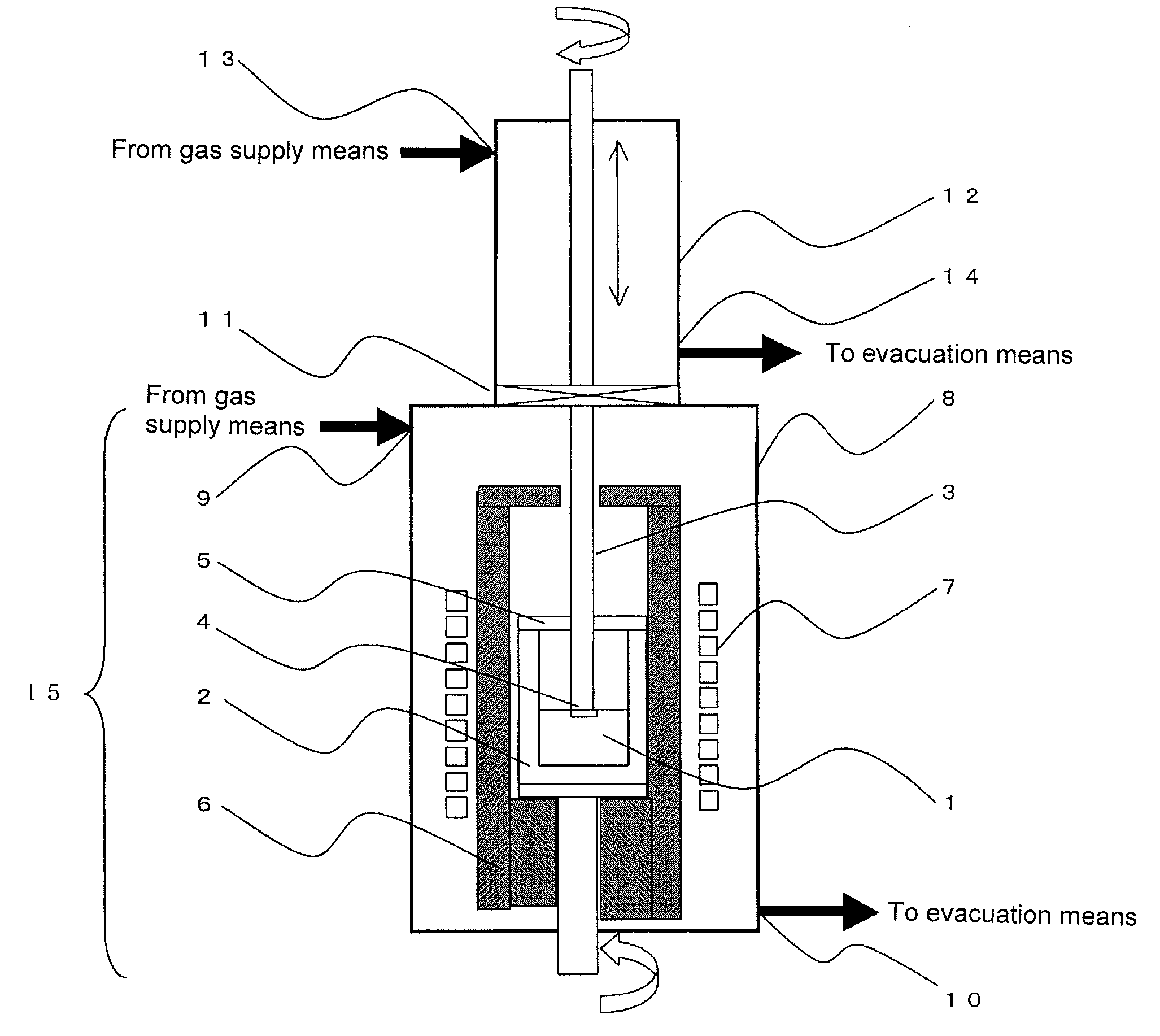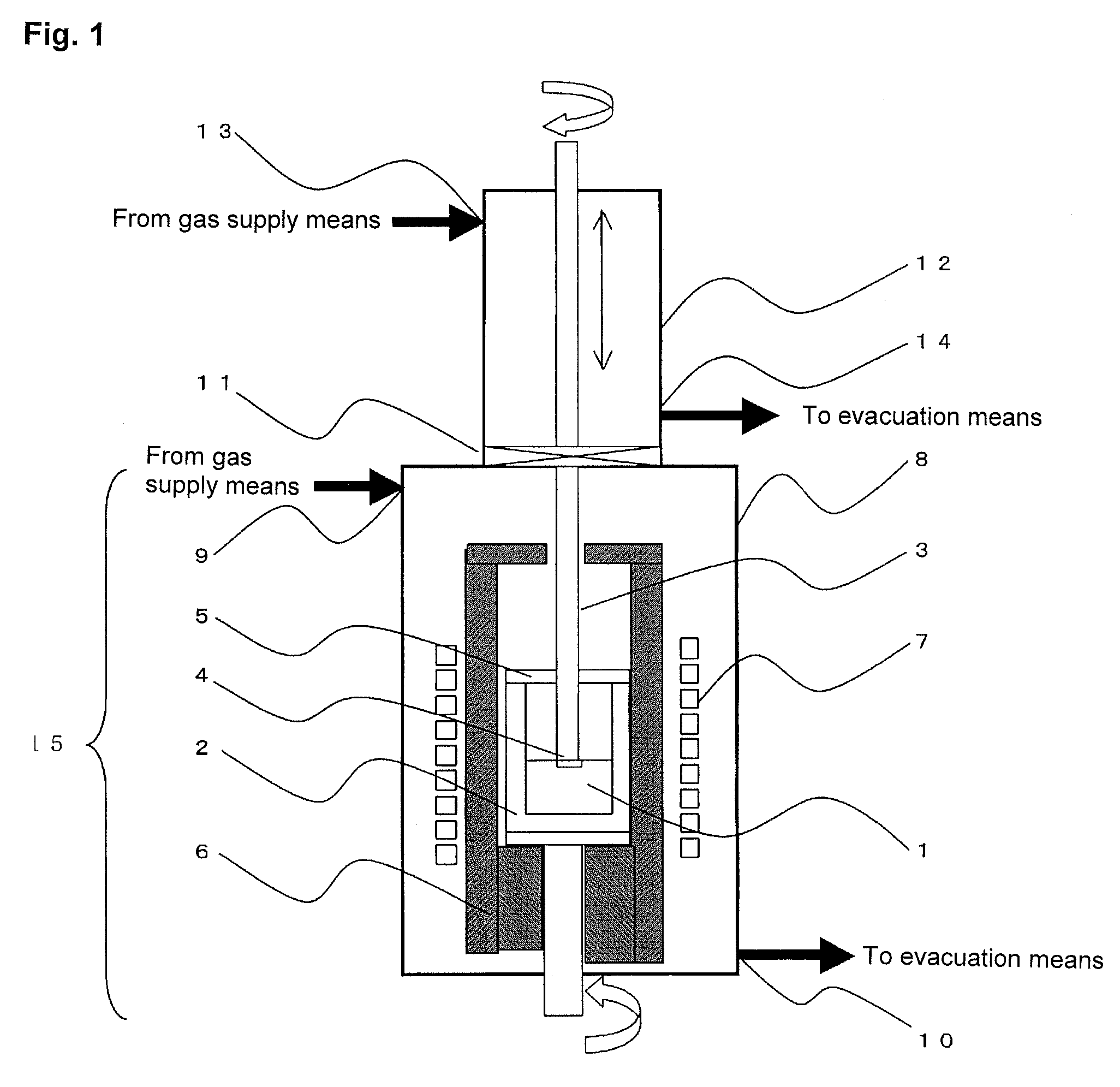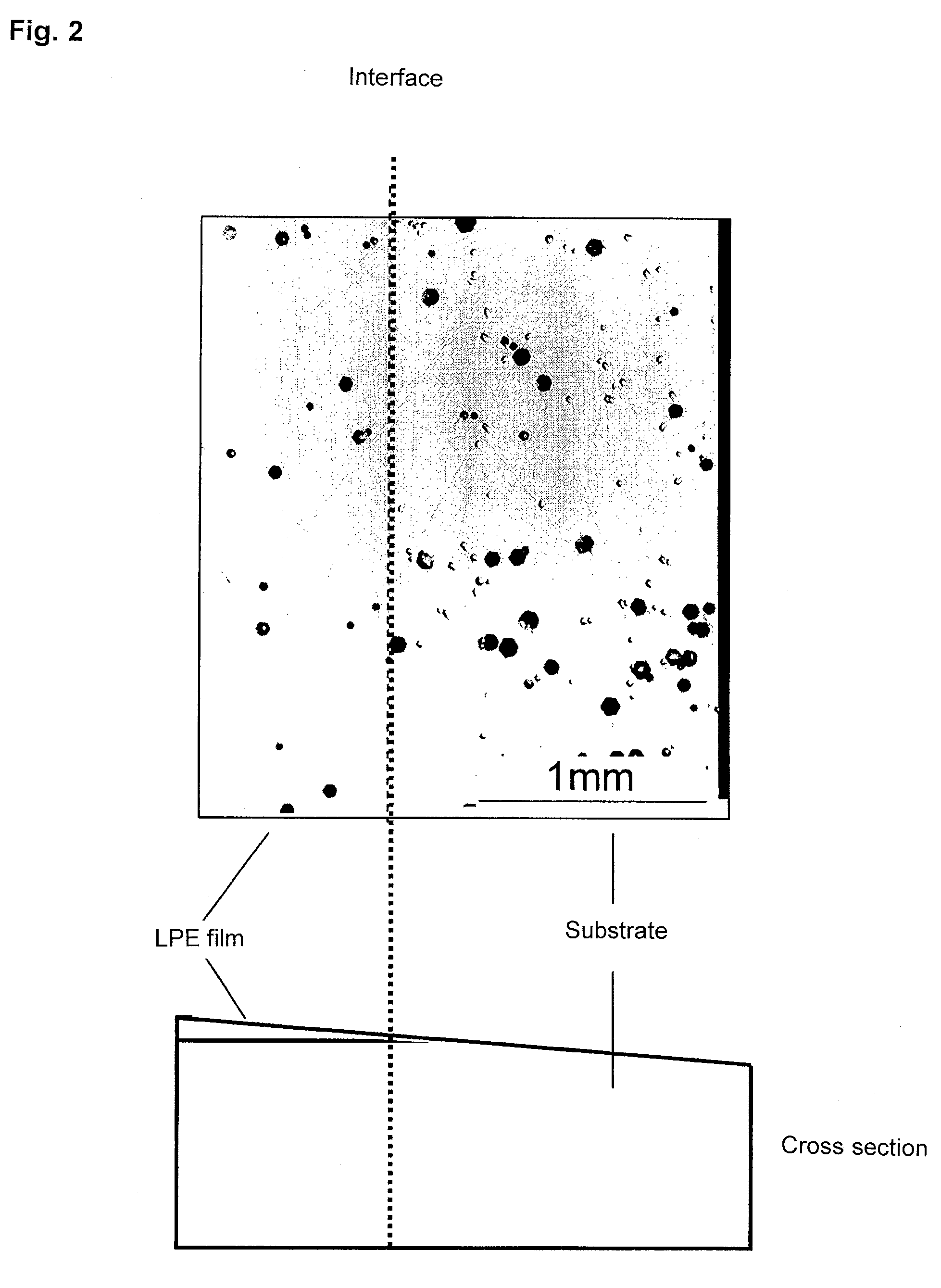Method and apparatus for manufacturing a SiC single crystal film
a single crystal and silicon carbide technology, applied in the direction of crystal growth process, chemistry apparatus and processes, polycrystalline material growth, etc., can solve the problem of reducing affecting the device performance, and having to be able to obtain a single crystal with a quality significantly superior to that of the seed crystal, so as to reduce the level of gas remaining and increase the heating efficiency of the crucible
- Summary
- Abstract
- Description
- Claims
- Application Information
AI Technical Summary
Benefits of technology
Problems solved by technology
Method used
Image
Examples
example 1
[0113]Before the growth experiment, an evacuation step was carried out in which members inside the main chamber including the heat insulating material were heated under a vacuum. The vacuum worsened with the start of temperature increase. Therefore, when the vacuum inside the main chamber reached 1×10−1 Pa or above, the rise in temperature was stopped with heating being continued so as to maintain that temperature, and waiting was performed in that conditions until the vacuum pressure returned to 1×10−2 Pa or below. By repeating this process, the final temperature reached in heating was made 1750° C., which was 50° C. higher than the growth temperature of 1700° C. Temperature measurement was carried out by measuring with a pyrometer the temperature of the rear surface of the portion of the crystal holder (made of graphite) to which a single crystal substrate attached. When the heating temperature decreased to the growth temperature of 1700° C., the vacuum pressure at 1700° C. was 1×...
example 2
[0116]The temperature reached by heating in the evacuation step was made 1700° C., which was the same as the growth temperature. The vacuum pressure in the main chamber at 1700° C. was 5×10−3 Pa. A SiC epitaxial film was grown on a single crystal substrate in a manner which was otherwise the same as in Example 1.
example 3
[0117]The heating temperature reached in the evacuation step was made 1800° C., which was 100° C. higher than the growth temperature of 1700° C. When the heating temperature subsequently fell to the growth temperature of 1700° C., the vacuum pressure in the main chamber was 1×10−4 Pa. When heating was stopped and the interior of the apparatus was cooled, the vacuum pressure at room temperature became 1×10−5 Pa. A SiC epitaxial film was grown on a single crystal substrate in a manner which was otherwise the same as in Example 1.
PUM
| Property | Measurement | Unit |
|---|---|---|
| vacuum pressure | aaaaa | aaaaa |
| pressure | aaaaa | aaaaa |
| angle | aaaaa | aaaaa |
Abstract
Description
Claims
Application Information
 Login to View More
Login to View More - R&D
- Intellectual Property
- Life Sciences
- Materials
- Tech Scout
- Unparalleled Data Quality
- Higher Quality Content
- 60% Fewer Hallucinations
Browse by: Latest US Patents, China's latest patents, Technical Efficacy Thesaurus, Application Domain, Technology Topic, Popular Technical Reports.
© 2025 PatSnap. All rights reserved.Legal|Privacy policy|Modern Slavery Act Transparency Statement|Sitemap|About US| Contact US: help@patsnap.com



